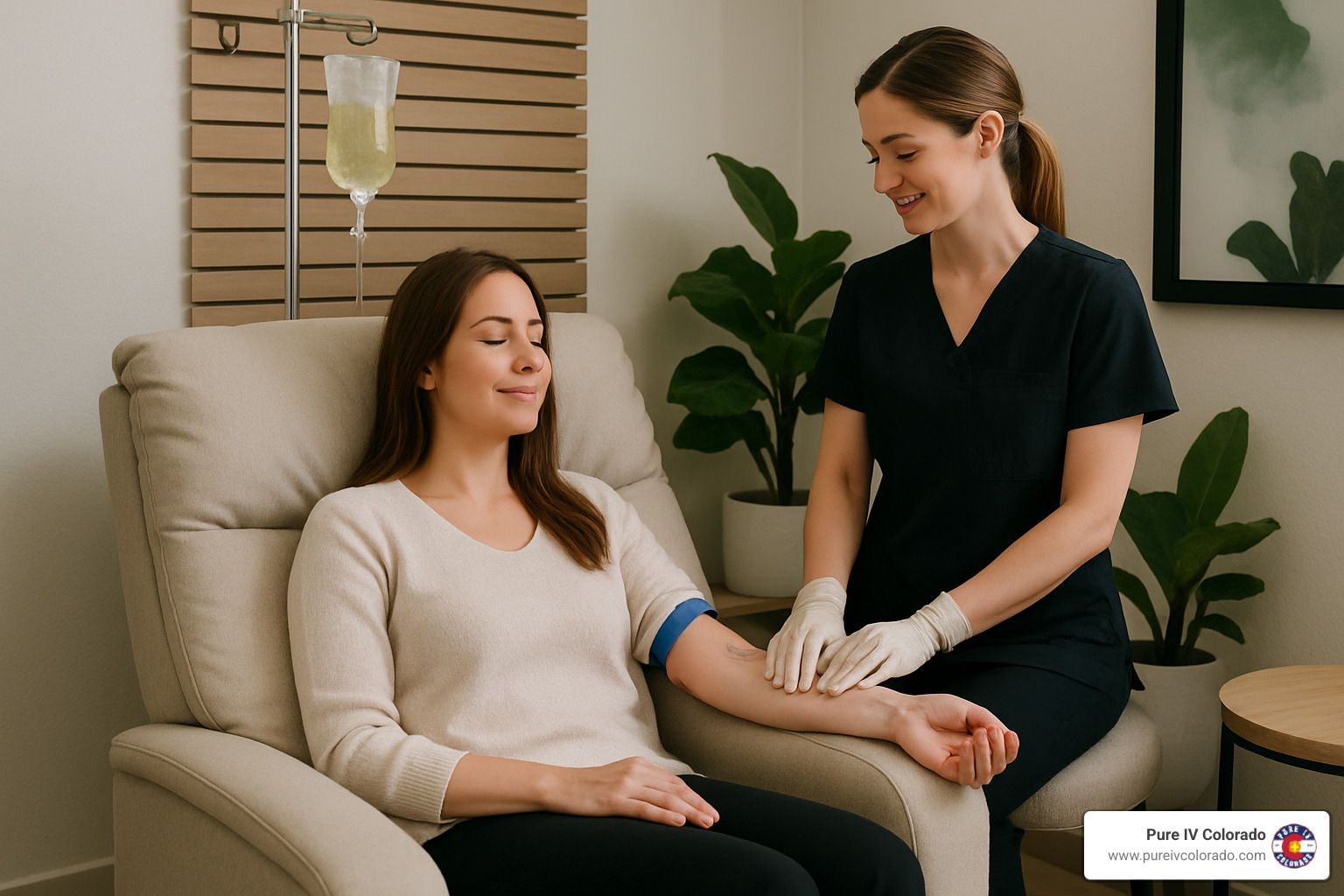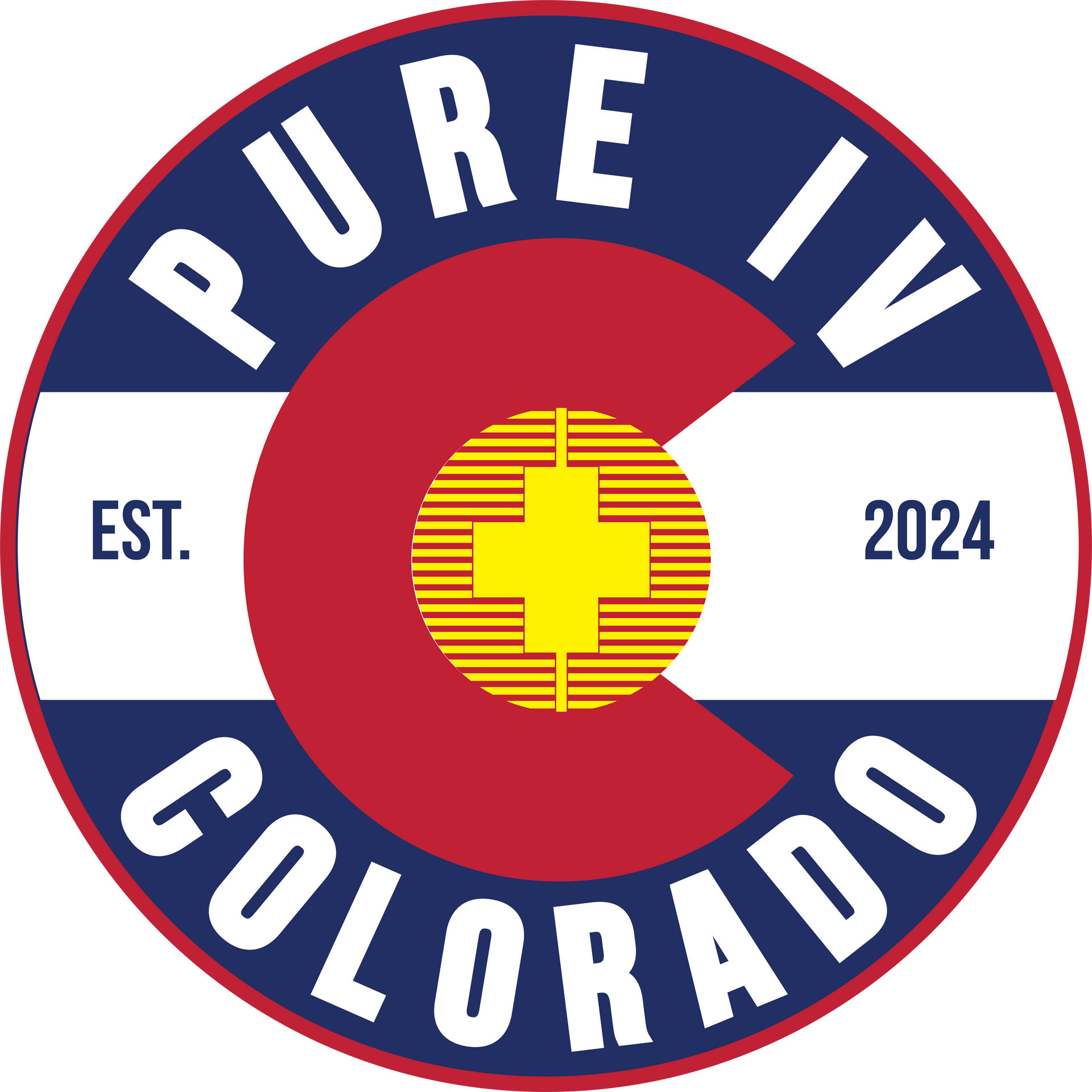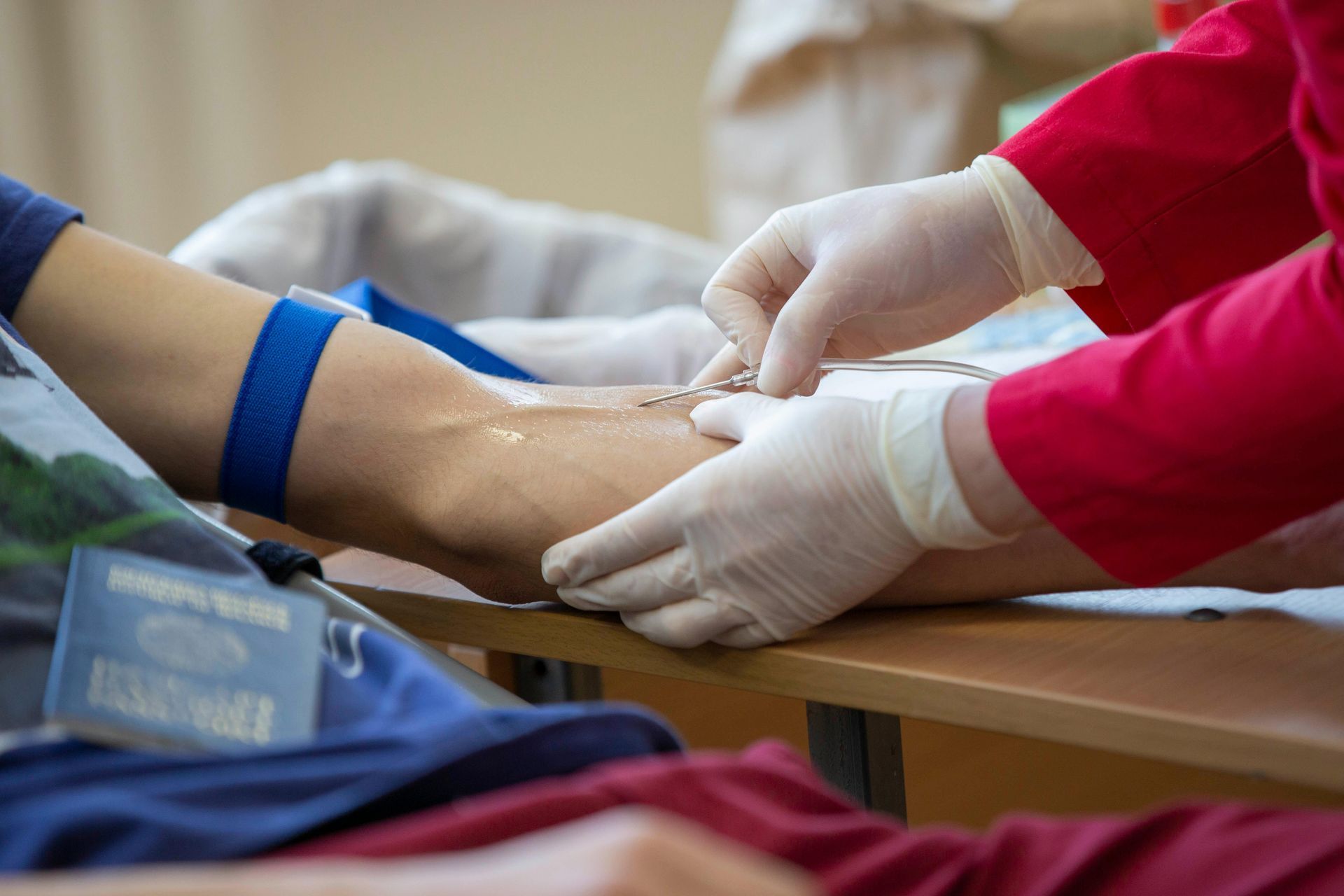Does IV Therapy Work? Benefits, Risks, and When It Helps Most
When fluids won’t stay down, IV therapy can rehydrate you quickly and reduce related symptoms. For goals like energy, immune support, or beauty, results vary between individuals. The difference is delivery: IVs place fluids, electrolytes, and optional vitamins directly in the bloodstream for faster availability than oral supplements, useful for travelers, athletes, and anyone recovering on a tight timeline.
Pure IV Colorado brings licensed-nurse IV care to you anywhere on the Front Range. Pick a drip for hydration, jet lag, migraines, and more, then schedule a mobile visit online.
How IV Therapy Works
IV therapy infuses fluids, electrolytes, and optional vitamins/medications through a tiny catheter directly into your bloodstream. By bypassing digestion, dosing is more predictable and the effect is faster and more useful when you’re significantly dehydrated or can’t keep liquids down. For routine “wellness boosts” (energy, immunity, beauty), outcomes vary from person to person.
Key Elements That Show How IV Therapy Works
- Fluids and electrolytes go straight into your bloodstream, so there’s no digestion delay and hydration is more reliable when you can’t keep liquids down.
- Replacing fluid and electrolytes quickly can support blood pressure and cell hydration, easing fatigue, headache, and nausea faster than drinking.
- When appropriate, a nurse can add optional vitamins or medications like magnesium, B-complex, or anti-nausea medicine based on your goals.
- Licensed clinicians use sterile technique, watch your vital signs during the drip, and give simple aftercare instructions so you know what to expect.
What actually happens during a visit
A licensed nurse reviews your health history, chooses and preps a vein, places the IV using sterile technique, and monitors the drip until you’re done. Because fluid volume and electrolytes are restored directly in circulation, people often notice quicker relief from fatigue, headache, nausea, or travel-related dehydration than they would with oral intake.
When IV Therapy Works Best for You
IV therapy is most useful for rapid rehydration, especially when drinking isn’t working. For everyday “wellness boosts,” results vary by person.
Best-fit scenarios
- Moderate–severe dehydration: Heat, fever, food poisoning, long travel, or altitude can drain fluids fast. An IV can quickly restore volume and electrolytes, easing dizziness, headache, and fatigue.
- When oral fluids won’t stay down: Vomiting, diarrhea, or migraine-related nausea make sipping tough; IV hydration bypasses the gut to help you recover sooner.
- Hangover relief: Replenishing fluids/electrolytes with nurse-guided add-ons when appropriate may reduce nausea, headache, and weakness.
- Travel & altitude/jet lag (Colorado’s dry, high altitude): Rehydrate after flights or busy days and help counter dry-air/altitude effects with a mobile IV at your home, hotel, office, or event.
- Athletic recovery: Heavy sweat loss, cramps, or post-event fatigue can improve with targeted fluids and electrolytes.
- Post-illness recovery: After a stomach bug or flu, IV hydration helps when sipping still feels difficult.
- Migraine support: Hydration plus nurse-selected medications (when appropriate) may ease symptoms and help you rest.
When IV Therapy May Not Be the Right Choice
IV therapy can support hydration and short-term symptom relief but it isn’t a cure-all or a replacement for medical care. Think of it as supportive wellness, not a disease treatment.
Situations where IV therapy often won’t meet expectations
- As a “cure” for disease: It does not treat or cure conditions like cancer, diabetes, chronic heart disease, infections, or endocrine disorders.
- When the root cause isn’t hydration/nutrients: If fatigue, low energy, or illness stems from sleep debt, thyroid issues, depression, anemia, etc., an IV won’t fix the underlying problem.
- Expecting instant or long-lasting results from one drip: Many people feel better after rehydration, but durable results aren’t guaranteed and vary by person.
- Replacing healthy habits: IVs don’t substitute for sleep, nutrition, movement, and stress management.
- Without proper clinical guidance: People with kidney disease, heart failure, severe electrolyte disorders, or fluid restrictions may be unsafe candidates for IV fluids. Always get clinician screening first.
- Mild dehydration you can drink through: If you can keep oral fluids down, oral rehydration is usually the first step.
- Emergencies or red-flag symptoms: Chest pain, severe shortness of breath, stroke symptoms, high fever with confusion, or severe allergic reactions require urgent medical care, not a wellness IV.
Side Effects & Risks of IV Therapy
Common (usually mild)
- Small bruise, soreness, or redness at the IV site
- Temporary swelling if some fluid goes under the skin (infiltration)
Less common
- Nausea, lightheadedness, or a brief metallic taste
- Vein irritation (phlebitis)
Rare but serious
- Infection if sterility breaks
- Allergic reaction to an ingredient
Blood clot in the vein
- Air embolism (air bubble in the bloodstream)
- Fluid overload or electrolyte shifts—higher risk with heart, kidney, or endocrine issues
Why Choose Pure IV Colorado for Honest IV Therapy

We’re upfront about what IV therapy can and can’t do. IV hydration can help with dehydration, fatigue, and short-term recovery, but it isn’t a cure for serious health conditions. We set clear expectations so you see IV therapy as supportive care, not a replacement for your medical treatment.
We also explain possible side effects and risks. Minor issues like bruising or soreness can occur, and rare complications—such as infection, allergic reactions, or fluid overload in people with certain conditions are possible. We screen every client and tailor each drip to your needs to help minimize risk while delivering rapid hydration.
Our licensed clinicians use sterile technique, monitor your session, and give simple aftercare so you know what to expect. This transparent, safety-first approach acknowledges IV therapy’s limits while showing how it can still play a valuable role in short-term recovery and wellness when used responsibly.










